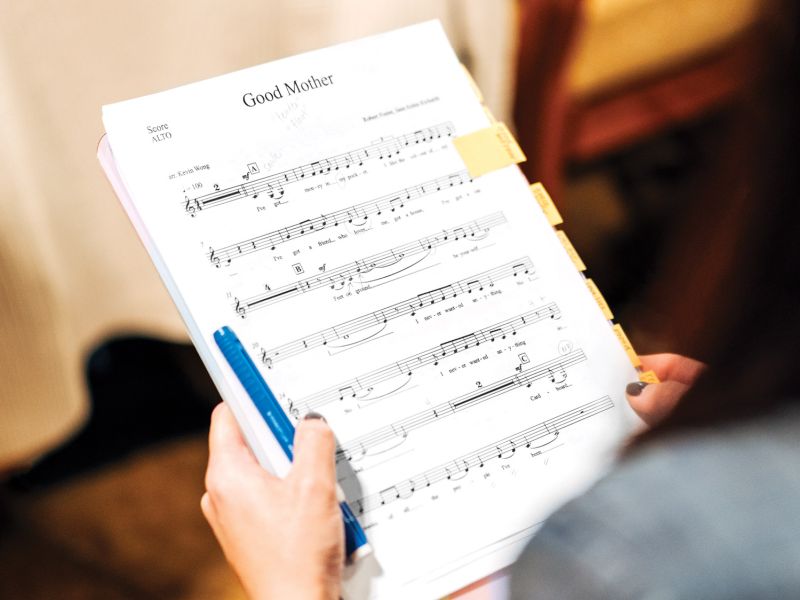New books in early childhood studies

Over the 2023/24 academic year, professors in the School of Early Childhood Studies were busy exploring new concepts, experimenting with new methods, engaging with the community — and working to make children’s first learning experiences intriguing, captivating and fun. We’ve rounded up five new books published this past year that highlight the results of their scholarly, research and creative activity.

Charlene Ryan: Playing with Sound: A Sound Books Anthology
Publisher (external link) , Amazon (external link)
This collection of six picture books uses a creative approach to explore sound and music — one that visually represents musical concepts for young and novice learners. Through original artwork, the book clearly depicts sound ideas, with few or no words required. With this unique approach, students can bring together both visual and aural imagery and creativity.
Professor Ryan designed the series for interactive use between parents and children, and teachers and students as part of a music or integrated arts education course. It explores vocal and instrumental skill-building and conceptual musical understanding. Each volume focuses on a particular skill and/or concept area — along with strategies for effective use. A great tool for novice and experienced educators interested in creative approaches to exploring sound and music!
Rachel Berman: Sociological Research and Urban Children and Youth
Publisher (external link) , Amazon (external link)
According to the United Nations, by 2050, 70 percent of the world’s children will live in cities. How do diverse urban environments influence and shape the experiences of these young people, and vice versa? Research — not only about young people, but also with them — holds great potential for impacting decision making on multiple levels of policy and service provision.
Professor Berman and her co-editors bring together cutting-edge work from around the world that not only addresses, but also engages with young people on their urban living experiences and the accompanying social, political, and ecological realities. Featuring contributions from Australia, Canada, Iran, the U.K., and the United States, the book looks at relationality, citizenship and belonging, power, structure, agency and much more. An eye-opening read for researchers and policymakers alike!


Susan Jagger: Handbook of Curriculum Theory, Research, and Practice
Publisher (external link) , Amazon (external link)
What does the international — and famously contentious — field of curriculum entail in theory, research and practice? Professor Jagger’s new co-edited handbook paints a comprehensive portrait of issues underpinning, guiding, and challenging theory, research, and practice in education. It highlights the work of theorists, researchers and practitioners in more than 50 countries as it considers curriculum as beginning, placing, caring, storying, changing, liberating, designing, and teaching.
The book takes up a wide range of curricular content and contexts. Some are general — such as the purposes and politics of schooling. Others are more specific — such as evaluation, the use of instructional objectives, or curriculum integration. It looks at recurrent themes, historical antecedents, and curricular debates arising from and grounded in epistemological traditions — including ideas that have led to marginalization based on race, class, gender, sexuality, ethnicity, age, religion, and ability.
Jason Nolan: Allen Strange’s Electronic Music: Systems, Techniques and Controls
When professor Nolan was realigning his teaching and research toward inclusive community music, in 2018, he was returning to his roots in electronics and electronic music. The best resource he could recall was Allen Strange's Electronic Music: Systems, Techniques, and Controls. Published in 1972, it was the first college text on electronic music composition. There was just one problem: only poorly scanned PDFs or used copies selling for hundreds of dollars were available, so he started searching about how to get the work back into print.
After a six-year journey to bring this important work back to life, prof Nolan published a revised edition in 2022, with the help of TMU librarians, and the support of Strange’s family. After two successful kickstarters, over 10k copies have been distributed around the world in hard and soft cover and digital versions. As a non-profit project, residual funds from the book’s sale are being used in Toronto, Brooklyn and with the Canadian Accessible Musical Instrument Network to support community music initiatives in focusing on inclusive community music using electronic tools.
Available for purchase in:
- Canada: Nightlife Electronics (external link)
- US: Synthcube.com, Control.com (external link) , Perfectcircuit.com (external link)
- UK: Thonk (external link)
- Germany: Schneidersladen (external link)
- To order a PDF version of the copy, contact Jason Nolan


Nicole Land: Bodying Postqualitative Research – On Being a Researching Body within Fissures of Humanism
Amazon (external link) , Overview (external link)
What happens to scholars — and their literal, fleshly human bodies — when they turn away from conventional qualitative research methods and, instead, begin using new postqualitative ways of thinking and doing? Ones that dismantle the very structures of humanistic epistemology, ontology and methodology that typically govern pedagogical research? By illuminating postqualitative conceptions data, methodology, and clarity, Prof Land’s book offers alternative perspectives on inquiry in the fields of education, and feminist and gender studies.
But that’s not all. The book does far more. Importantly, it explores bodied approaches to research — playing with the fascinating intersection of physiology and postqualitative work. How do physical human bodies unfurl and react viscerally to new ways of thinking and doing inquiry? How do tiny bones in the ears vibrate? How does skin tingle with excitement? How do bones and muscles lie still or move about with each new postqualitative experience?
A delightful and purposefully short read for scholars and students interested in journeying the realm of postqualitative research — with periodic interjections of poetry to disrupt readers’ rhythm and enliven their contemplation on what they’ve just read.


